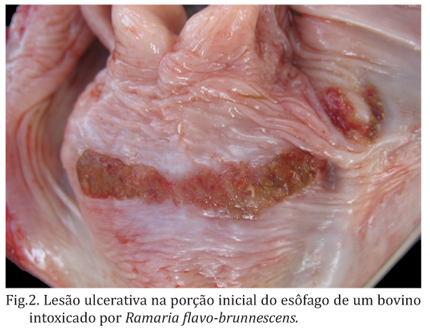The aim of this study was to describe and discuss the epidemiological aspects of spontaneous outbreaks of poisoning by Ramaria flavo-brunnescens in cattle maintained in silvipasture system in Southern Brazil. Three outbreaks of the disease between 2011 and 2013 were diagnosed. In two outbreaks morbidity was 35% and 37.4%, and the mortality rate was 36.12% and 16%, respectively. The fatality rate in these outbreaks was 45.71% and 96.55%. The diagnosis was confirmed by the epidemiology and the presence of the mushroom in the areas where the cattle grazed, in addition to the clinical signs, gross and histological lesions. The climatic data of temperature, humidity and rainfall were statistically analyzed and no significant differences were observed between the years 2007-2013. It was not possible to confirm that the presence of R. flavo-brunnescens in eucalyptus groves is associated with rainy autumns and warm dry summers. It is likely that other factors are associated with the presence of the mushroom in the woods and its toxicity. The soil and type of forest planted may also determine the presence of the mushroom in the area. It is possible that the species of eucalyptus is also a determining factor for the occurrence of the mushroom, since in many eucalyptus forests R. flavo-brunnescens does not occur. The recognition of the mushroom by workers and farmers and the time for its development in the eucalyptus woods is essential to minimize economic losses caused by the poisoning.
Poisonous plants; Ramaria flavo-brunnescens; Clavariaceae; silvo-pasture system; Eucalyptus spp.; plant poisoning; mycotoxicosis; cattle


